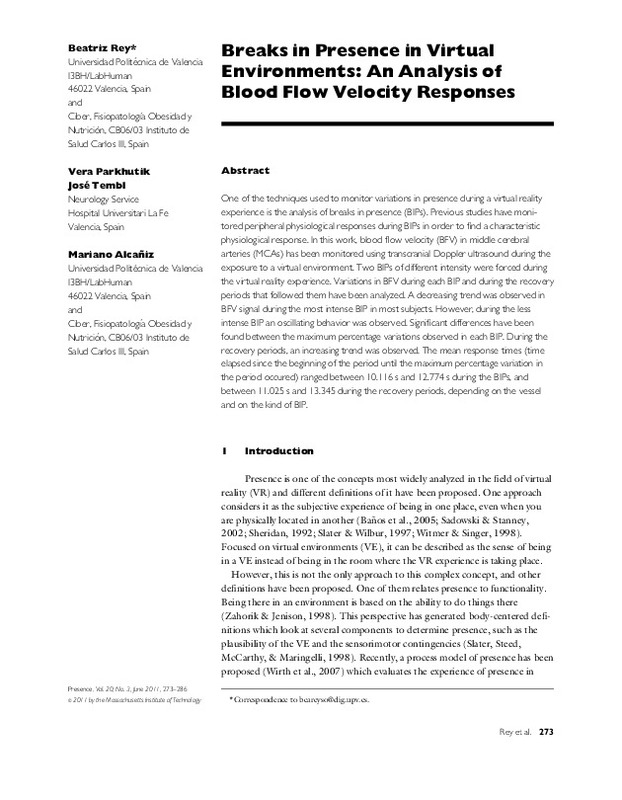JavaScript is disabled for your browser. Some features of this site may not work without it.
Buscar en RiuNet
Listar
Mi cuenta
Estadísticas
Ayuda RiuNet
Admin. UPV
Breaks in Presence in Virtual Environments: An Analysis of Blood Flow Velocity Responses
Mostrar el registro completo del ítem
Rey Solaz, B.; Parkhutik, V.; Tembl, J.; Alcañiz Raya, ML. (2011). Breaks in Presence in Virtual Environments: An Analysis of Blood Flow Velocity Responses. Presence: Teleoperators and Virtual Environments. 20(3):273-286. doi:10.1162/PRES_a_00049
Por favor, use este identificador para citar o enlazar este ítem: http://hdl.handle.net/10251/78942
Ficheros en el ítem
Metadatos del ítem
| Título: | Breaks in Presence in Virtual Environments: An Analysis of Blood Flow Velocity Responses | |
| Autor: | Parkhutik, Vera Tembl, José | |
| Entidad UPV: |
|
|
| Fecha difusión: |
|
|
| Resumen: |
One of the techniques used to monitor variations in presence during a virtual reality experience is the analysis of breaks in presence (BIPs). Previous studies have monitored peripheral physiological responses during BIPs ...[+]
|
|
| Palabras clave: |
|
|
| Derechos de uso: | Reserva de todos los derechos | |
| Fuente: |
|
|
| DOI: |
|
|
| Editorial: |
|
|
| Versión del editor: | http://www.mitpressjournals.org/loi/pres | |
| Tipo: |
|









